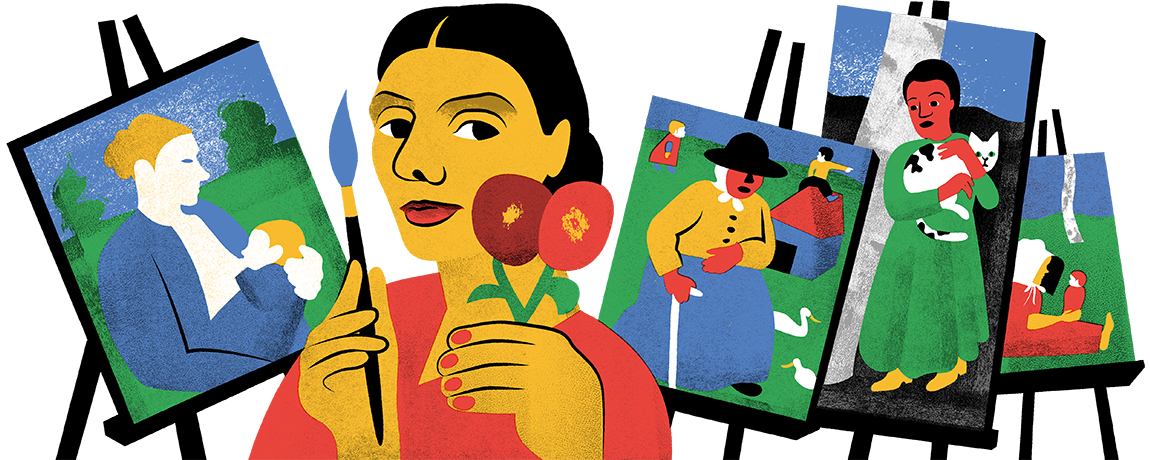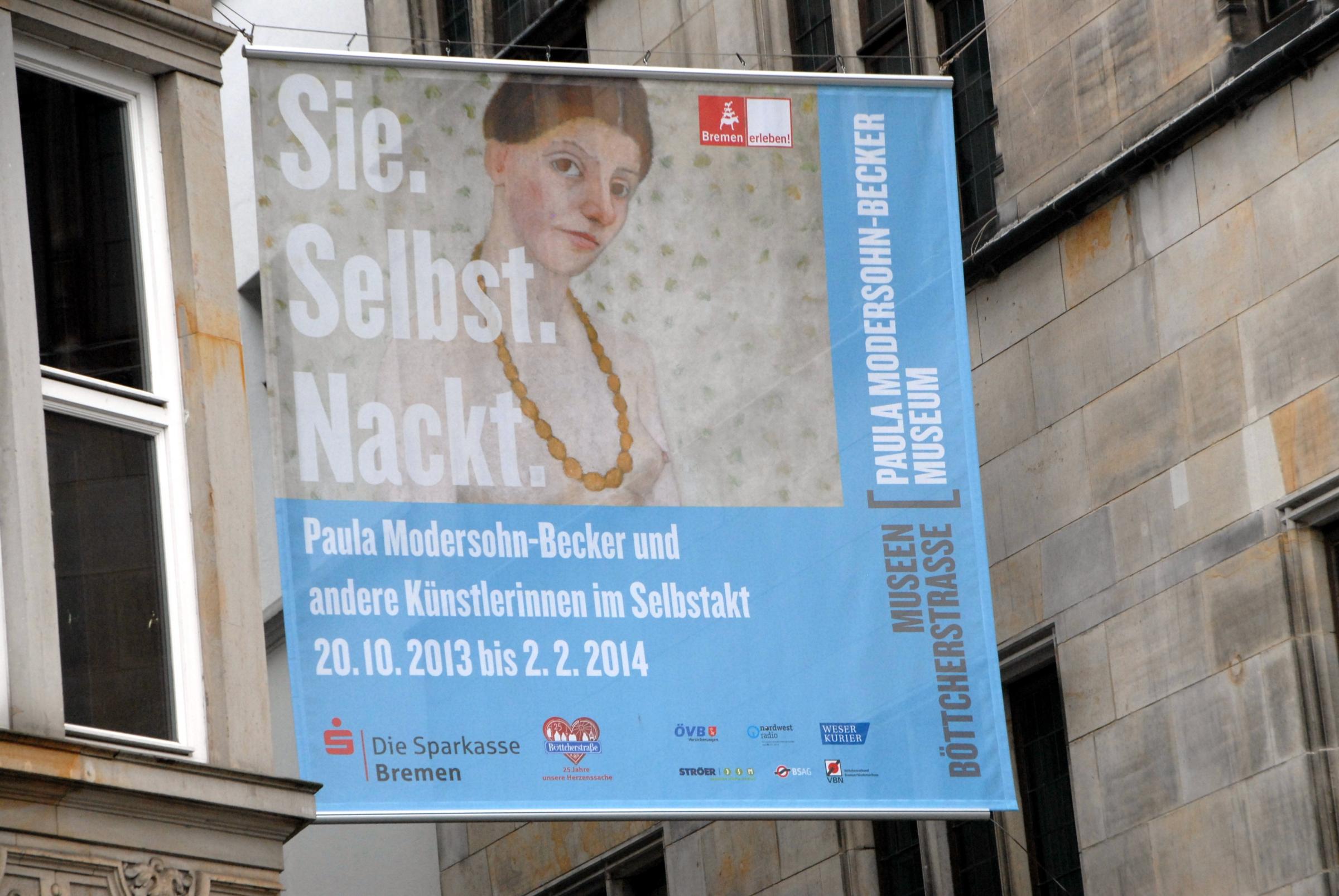
On Paula Modersohn-Becker’s 142nd birthday, Google is celebrating the under-appreciated German artist with a Google Doodle.
The first woman to paint a naked self-portrait didn’t care much for the traditional expectations or institutions that constrained most European women at the turn of the 20th century.
Paula Modersohn-Becker’s parents wanted her to become a teacher, and told her to abandon her “egotism” in order to carry out her wifely duties; instead, she became one of the era’s most prolific artists, and helped give rise to the modernist movement alongside Pablo Picasso and Henri Matisse.

Google’s Doodle for Modersohn-Becker was created by Golden Cosmos, a Berlin-based art duo. The illustration features Modersohn-Becker at work, brush and flowers in hand, with four completed works behind her.
5 Things You Should Know About Paula Modersohn-Becker:
1. Modersohn-Becker sold just three paintings, but she pursued her work with a ferocity fueled by a sense that she had “lost” the first two decades of her life.
2. At the age of 18, Modersohn-Becker defied her parents to join an artist colony in Worpswede, in northern Germany. There, she met her future husband, the older, respected artist Otto Modersohn.
3. Eager to learn more about modern art, Modersohn-Becker soon after moved to Paris, and encouraged Modersohn to join her. The two got engaged, at which point her family intervened and sent Modersohn-Becker to a cooking school in preparation for her coming marriage. But Modersohn-Becker refused to put aside her ambitions and paint brushes, and boldly declared she “was going to become somebody“. Her works often featured regular women, frequently painted nude, as they slept, breastfed and gardened.
4. In 1906 alone, the prolific artist painted 80 pictures. Modersohn-Becker died at the age of 31 the following year of an embolism, 18 days after giving birth to her daughter.
5. The literal fruits of her labor — Modersohn-Becker painted pumpkins, cherries and lemons — were commemorated by her friend, the German poet Rainer Maria Rilke, in his ode to her, “Requiem for a Friend.”
More Must-Reads From TIME
- The 100 Most Influential People of 2024
- The Revolution of Yulia Navalnaya
- 6 Compliments That Land Every Time
- What's the Deal With the Bitcoin Halving?
- If You're Dating Right Now , You're Brave: Column
- The AI That Could Heal a Divided Internet
- Fallout Is a Brilliant Model for the Future of Video Game Adaptations
- Want Weekly Recs on What to Watch, Read, and More? Sign Up for Worth Your Time
Write to Laignee Barron at Laignee.Barron@time.com